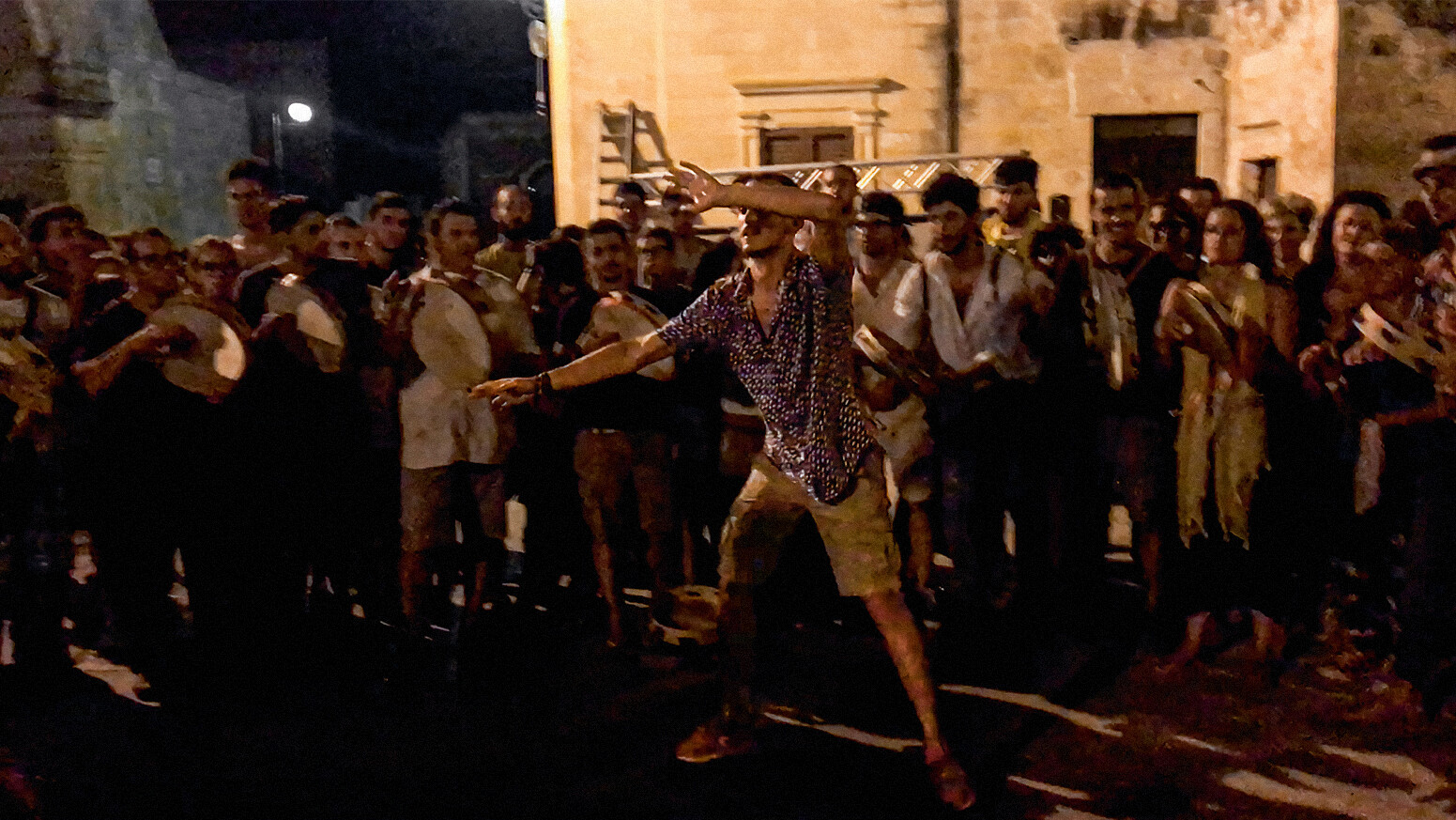We Ate the Wind
May 26–August 27, 2023
Place de la Gare 16
PLATEFORME 10
1003 Lausanne
Switzerland
Hours: Tuesday–Sunday 10am–6pm,
Thursday 10am–8pm
T +41 21 318 44 00
mcba@plateforme10.ch
The Musée cantonal des Beaux-Arts de Lausanne (MCBA) is pleased to present a new two-channel film installation by Emily Jacir, We Ate the Wind, especially commissioned for its Project Space.
The works of Emily Jacir draw on archival and historical research as much as subjective or biographical narratives. They unearth and lend form to histories that have been silenced, focusing mainly on exchange, translation, resistance, and movement. Based in the Mediterranean, the artist uses a wide range of media and methodologies that include film, video, photography, sculpture, installation and performance to investigate personal and collective movement through space and time. Many of her works are made in response to particular contexts and deal with issues of kinship networks, migration, and cross-border lives; the artist is especially interested in the way historical memory is inscribed over time or across geographies. Over the past thirty years, Emily Jacir’s works have depicted both banal vestiges of violent dispossession in everyday lives and extraordinary stories of resistance.
While migration, whether voluntary or forced, lies at the heart of much of her practice, Emily Jacir is particularly interested in the question of the processes of “recognition,” in a political and judicial sense, and their consequences on the politics of belonging. For her intervention in MCBA’s Project Space, she presents a two-channel film installation made up of recent images as well as archival footage that addresses questions of visibility and invisibility, proximity and distance, hospitality and exclusion, in order to explore a recent aspect of Swiss immigration policy and its impact on individuals and communities. Indeed, in the aftermath of World War II, Switzerland devised a policy largely based on recruiting “guest workers” who were not meant to settle permanently in the country, including over two million Italians. This led to the development of a status (abolished in 2002) that would become emblematic of immigration in Switzerland, that of seasonal workers, a condition that excludes family reunification and in certain cases, for the children of immigrants, lead to hiding, invisibility, and silence. Today these thousands of “closet children” are seeking reparations and acknowledgment by the Swiss government of this violation of human rights.
In collaboration with her community of dancers and musicians, Emily Jacir addresses questions of family separations and fragmented communities, public and private space, and more broadly questions of acknowledgment and reparations. Drawing on rituals such as dance, processions, and games, the artist traces the way space, community and social affiliations foster collectivity and memory. Echoing her own personal history (like many Palestinians, she grew up in the Gulf the daughter of guest workers and was forced to leave her family at the age of fourteen), Emily Jacir summons images of community dances from the Salento region of Southern Italy, in particular the pizzica, from the family of tarentelle dances, which have links to healing rituals, and which the artist has practiced for over a decade. Thus, the silence imposed on children is contrasted with sound, solitude and confinement with the joy of rhythm and movement, living apart and in the shadows with gathering together in public spaces. Between those who are forced to whisper and those who can scream, between proximity and distance, between personal history and collective trauma, Emily Jacir gives form to historical memory through the fragmentary montage of images and sound.
Curated by Nicole Schweizer, Curator of contemporary art, MCBA
Biography
A graduate of the Memphis College of Art and the Whitney Independent Study Program in New York, Emily Jacir is the founder and director of Dar Yusuf Nasri Jacir for Art and Research in Bethlehem, Palestine. She teaches at the Nuova Accademia di Belle Arti in Rome, the Whitney Independent Study Program in New York, and the Salama bint Hamdan Al Nahyan Foundation in Abu Dhabi.
Her works have been widely exhibited all over the world since 1994. Solo exhibitions include the Irish Museum of Modern Art, Dublin (2016–17); the Whitechapel Gallery, London (2015); Darat il Funun, Amman (2014–15); the Beirut Art Center (2010); and the Guggenheim Museum, New York (2009).
Emily Jacir is the recipient of several awards including a Golden Lion at the 52nd Venice Biennale (2007); a Prince Claus Award (2007); the Hugo Boss Prize at the Guggenheim Museum, New York (2008); the Alpert Award (2011) from the Herb Alpert Foundation; the Andrew W. Mellon Foundation Rome Prize Fellow at the American Academy in Rome (2015); and the American Arts and Letters Award (2023), among others.
Publication
Nicole Schweizer (ed.), Emily Jacir. We Ate the Wind, with a text by Julia Bryan-Wilson (French/English), 40 p., 20 ill., Musée cantonal des Beaux-Arts de Lausanne, 2023 (coll. Espace Projet, no 4). Order at the MCBA Book- and Giftshop: shop.mcba [at] plateforme10.ch.
More information on the full public program here.
For press and images, visit mcba.ch.
With the participation of: Cinémathèque suisse / La RAI – Radiotelevisione Italiana / RSI Radiotelevisione svizzera.



